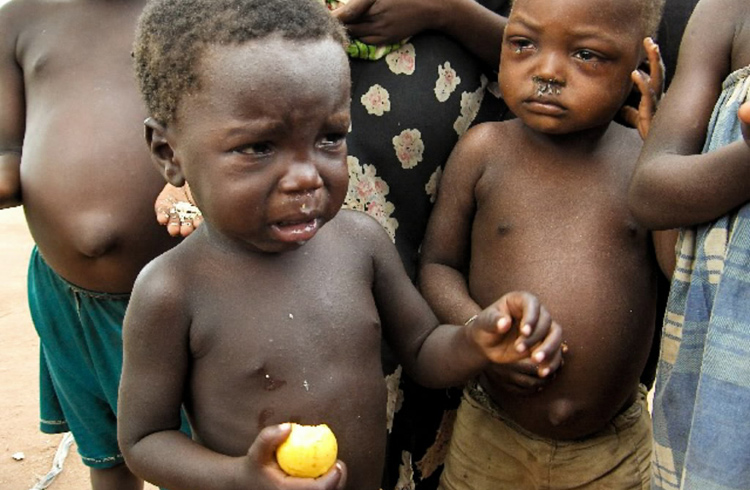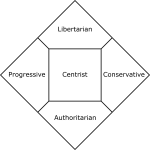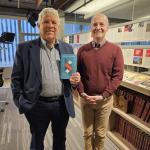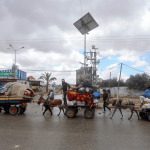Miz Shelby guest blogging from Guatemala.
Over half a dozen children sit quietly at the small wooden table. They all look younger than five. We are gathered at the home of Marta, a Madre Guía or Guide Mother, to watch the women prepare and serve lunch to their children.
Just steps away, Marta stirs vegetables on the stove top. The vegetables, a mixture of güisquil (like chayote) and soy protein. A pot of rice with red bell peppers and shredded carrot waits to be dished up nearby. Francisco, our World Vision translator, describes the güisquil like a green potato but less starchy and more nutritious. He passes one around the room. It has spines like a porcupine that dig into the palm of my hand, only the spines are short and the color of golf greens.
A girl in pink sitting at the head of the table looks over her shoulder at me. I wink. She grins and ducks her head back around.
The mothers begin to dish up the meal and pour cups of milk for the children. Someone passes around a few tortillas. Mothers hold the youngest children in their lap, spoon feeding them. Rice clings to their cheeks and chins.
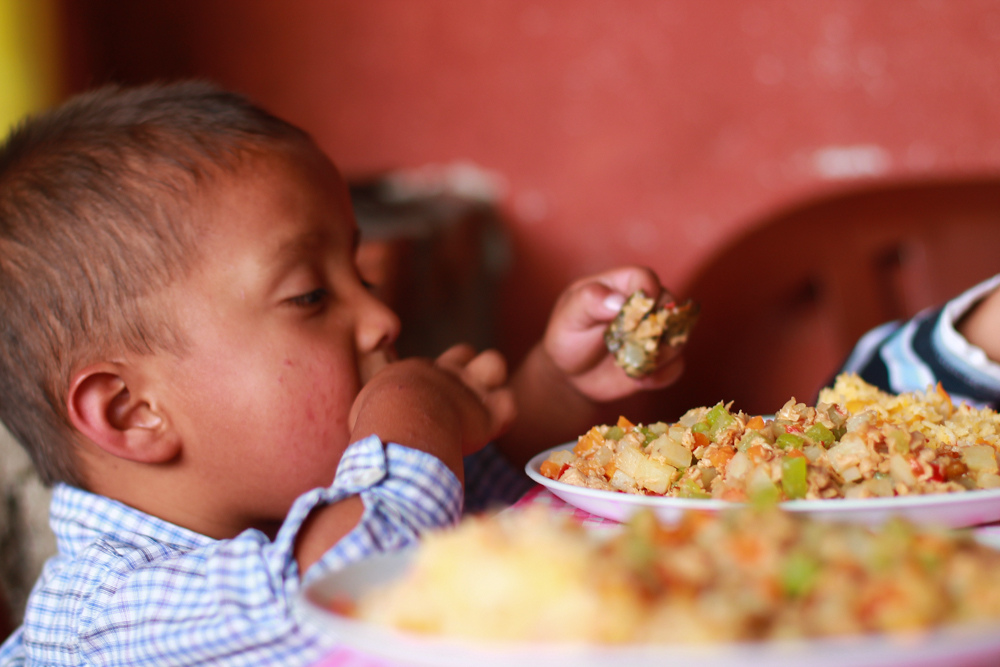
This community meal is part of World Vision’s answer to chronic malnutrition in the area.
Approximately 50 percent of Guatemalan children suffer from malnutrition. In some areas that number is as high as 9 out of 10 children. The critical years to address malnutrition is the first 5 years of a child’s life. After the age of 5, a child who has suffers early chronic malnutrition will continue to suffer the effects for the rest of their lives no matter how much their diet improves later on. The Guatemalan government and other organizations are working to fight this critical health problem in the country.
World Vision’s approach is twofold. Prevention and recovery. Recovery is a 10 month process.
The Guide Mother, like Marta, is a volunteer with World Vision. She is trained and in this case she opens her home to be a community center to evaluate the progress of the children and to teach their mothers proper care.
Recovery starts with a 12 day educational course where mothers come to learn about health and nutrition. After the 12 day course, the mothers monitor their children’s health over time as they implement the skills they learned. Once a month the mothers meet for meals like this to continue their education and to evaluate the well-being of the children. They also receive help in the areas where they are struggling. They learn skills like how to prepare water for various tasks, how to properly wash dishes, how to make their meal more nutritious and how to maintain basic hygiene practices.
As the mothers learn and practice good nutrition and hygiene, they go on to share what they have learned with their friends and other mothers, becoming guide mothers themselves. This is the knowledge chain that World Vision uses to create sustainable health practices. Where mothers teach mothers.
This is community building. Neighbors helping neighbors. Mothers helping mothers.
Down the road is the home of another mother. In her backyard she has a hydroponic garden, where a mixture of soil, sand, and coconut fiber allows her to grow new produce with minimal water. In her small garden, shoots of broccoli and lettuce grow 4 and 5 inches tall. In this area of Guatemala, black beans and corn are the main agricultural crops. Stalks of corn reach high up steep slopes along roads that wind through hills and mountains. But with the help of World Vision, some mothers are growing other nutritious foods to feed their families.
Steps away is a chicken coop where hens peck and pluck and cluck away, providing food for the family and an extra income when sold at the market.
World Vision isn’t just a child sponsorship organization. World Vision is empowering these mothers of Guatemala to not only better care for their families, but to provide for them as well. World Vision is in the business of building communities that work. They do this by working with community partners and building relationships with other organizations. And they do this by connecting mothers with not only the resources they need to care for their children, but with one another, so they can teach each other. This is how living in community works. Everyone pitching in where they can to help each other out.











